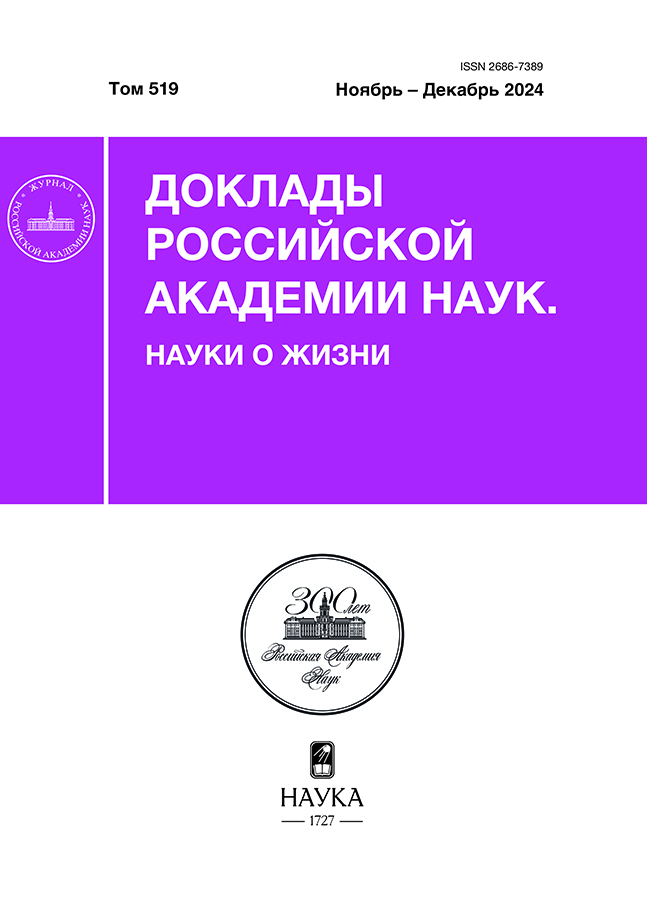Escherichia coli and Micrococcus luteus bacteria activate the CG45045 gene in the drosophila S2 cell line
- Autores: Polunina Y.A.1, Pravednikova A.E.1, Gassa M.1, Georgiev P.G.1, Shidlovsky Y.V.1, Kachaev Z.M.1
-
Afiliações:
- Institute of Gene Biology, Russian Academy of Sciences
- Edição: Volume 519, Nº 1 (2024)
- Páginas: 75-78
- Seção: Articles
- URL: https://rjeid.com/2686-7389/article/view/651384
- DOI: https://doi.org/10.31857/S2686738924060116
- ID: 651384
Citar
Texto integral
Resumo
The humoral immune system of Drosophila, the most studied among eukaryotes, is activated by the canonical IMD and Toll signaling pathways. Recently, new potential regulators of the innate immune response have been identified, such as long non-coding RNAs (lncRNAs) and genes encoding short polypeptides. S2 cells, being a macrophage-like cell line, are used as a model system to study the molecular mechanisms of immune response gene activation. We used this cell line to analyze the effect of Escherichia coli and Micrococcus luteus bacteria on the transcription of lncRNA-CR30055 and the CG45045 and CG44404 genes encoding short polypeptides. It was found that pathogens activate only CG45045, while the transcription levels of CR30055 and CG44404 remain unchanged. No activation of the Cecropin C gene and some Bomanin family genes was observed, indicating differences in the activation patterns of immune response genes in S2 cells and adult flies. The highest activation of CG45045 was observed between 6 and 12 hours of cell incubation with pathogens. The patterns of CG45045 activation after exposure to E. Coli and M. Luteus were similar, which may indicate common mechanisms of transcriptional activation of this gene. Thus, CG45045 may be a novel gene involved in the humoral immune response of Drosophila.
Palavras-chave
Texto integral
Sobre autores
Y. Polunina
Institute of Gene Biology, Russian Academy of Sciences
Email: k-z-m@mail.ru
Rússia, Moscow
A. Pravednikova
Institute of Gene Biology, Russian Academy of Sciences
Email: k-z-m@mail.ru
Rússia, Moscow
M. Gassa
Institute of Gene Biology, Russian Academy of Sciences
Email: k-z-m@mail.ru
Rússia, Moscow
P. Georgiev
Institute of Gene Biology, Russian Academy of Sciences
Email: k-z-m@mail.ru
Academician of the RAS
Rússia, MoscowY. Shidlovsky
Institute of Gene Biology, Russian Academy of Sciences
Email: k-z-m@mail.ru
Rússia, Moscow
Z. Kachaev
Institute of Gene Biology, Russian Academy of Sciences
Autor responsável pela correspondência
Email: k-z-m@mail.ru
Rússia, Moscow
Bibliografia
- Govind S. , Innate immunity in Drosophila: Pathogens and pathways, Insect science, 15 (2008) 29-43.
- Buchon N., Silverman N., Cherry S. Immunity in Drosophila melanogaster – from microbial recognition to whole-organism physiology, Nature reviews. Immunology, 14 (2014) 796-810. doi: 10.1038/nri3763
- Westlake H., Lemaitre M.A. B The Drosophila Immunity Handbook EPFL Press2024.
- Valanne S., Salminen T.S., Järvelä-Stölting M. et al., Immune-inducible non-coding RNA molecule lincRNA-IBIN connects immunity and metabolism in Drosophila melanogaster, PLoS pathogens, 15 (2019) e1007504.
- Atianand M.K., Fitzgerald K.A. Long non-coding RNAs and control of gene expression in the immune system, Trends in molecular medicine, 20 (2014) 623–631.
- Zhou H., Ni J., Wu S. et al., lncRNA-CR46018 positively regulates the Drosophila Toll immune response by interacting with Dif/Dorsal, Developmental and comparative immunology, 124 (2021) 104183.
- Leulier F., Parquet C., Pili-Floury S. et al. The Drosophila immune system detects bacteria through specific peptidoglycan recognition, Nature immunology, 4 (2003) 478–484.
- Kaneko T., Golenbock D., Silverman N. Peptidoglycan recognition by the Drosophila Imd pathway, Journal of endotoxin research, 11 (2005) 383–389.
- Lindsay S.A., Lin S.J.H., Wasserman S.A. Short-Form Bomanins Mediate Humoral Immunity in Drosophila, Journal of innate immunity, 10 (2018) 306–314.
- Gramates L.S., Agapite J., Attrill H., et al. FlyBase: a guided tour of highlighted features, Genetics, 220 (2022).
- Hanson M.A., Lemaitre B. Antimicrobial peptides do not directly contribute to aging in Drosophila, but improve lifespan by preventing dysbiosis, Disease models & mechanisms, 16 (2023).
Arquivos suplementares












